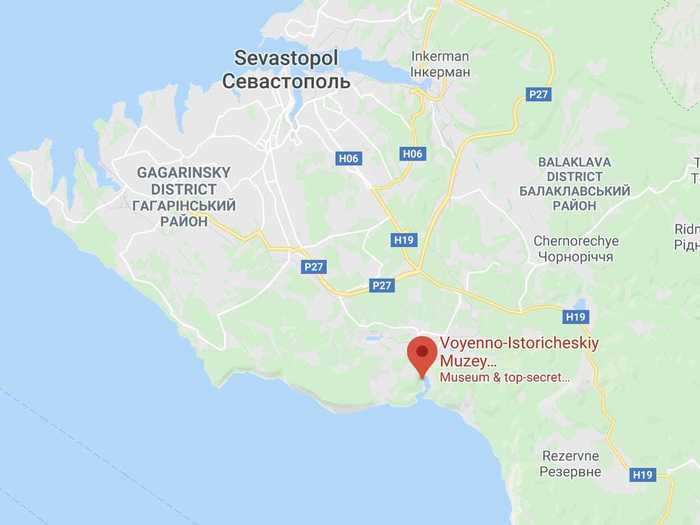
Hidden under a 400-feet-thick level of rock, the base is regarded as one of the world's largest secret military objects.Darmon Richter
While all abandoned places have interesting histories, this deserted Soviet-era submarine base has quite the story to tell.
Hidden away from the public for decades, this top-secret military base was used to maintain and repair the Soviet Black Sea Fleet, an advanced military fleet of submarines ready for war at a moment's notice during the Cold War.
After it was left abandoned at the end of the 20th century, its haunting hallways and dimly lit corridors remained empty. However, after being gifted to the Ukrainian Navy in 2000, the base was converted into the Balaklava Naval Museum, allowing visitors to step inside the abandoned building for the first time since the end of the war.
Here's a look inside the abandoned secret Soviet submarine base.

Underground in Balaklava Bay lies one of the most top-secret abandoned military bases in history.

According to Ukraine.com, the discreet location made it a perfect spot for the top-secret naval base.

The top-secret base was built by the USSR as a site to repair and maintain the Soviet Black Sea Fleet.

This allowed guests to step inside the base's abandoned walls to take photos and learn about its history.

However, according to The Bohemian Blog, the Crimean submarine base was not constructed until 1957, during the height of the Cold War.

According to Politico, Khrushchev claimed the Soviet Union had missile superiority.

It was also created to house a fleet of USSR submarines should the country wish to make a retaliatory nuclear strike against the USA.

According to The Bohemian Blog, the base took four years to construct and required the stealthy removal of more than 120 tons of rock in order to make the tunnels accessible to the water.

According to Discover Ukraine, the compartments were also blocked by gates made of steel and covered in a layer of concrete.

According to Discover Ukraine, the canal is located underneath the thick layer of rock.

According to Ukraine.com, the base was equipped with adequate ventilation, food, fuel supply, water, and electricity for the 1,500 military personnel at the base, as well as the inhabitants of Balaklava, should a nuclear attack occur.

The base is regarded as one of the world's largest secret military objects.

According to Discover Ukraine, the base housed repair shops, storehouses for torpedoes and other weapons, command posts, anti-nuclear shelters, and administrative offices for military personnel.

According to The Bohemian Blog, all visitors, including even the family members of those who worked at the base, needed "extensive documentation" in order to enter Balaklava.

Unlike many other military facilities, the naval base at Balaklava operated beyond the fall of the USSR, according to The Bohemian Blog.

According to The Bohemian Blog, the very last Russian submarine was removed from Balaklava Bay in 1996, five years after the fall of the Soviet Union.

Balaklava was now unrestricted, and those who moved to the town had little knowledge of the underground base. However, some managed to sneak down into the abandoned base and explore.

According to The Bohemian Blog, the submarine base officially opened to the public as the Balaklava Naval Museum Complex in the summer of 2003.

The conversion of the base into a museum effectively allows visitors to step back in time to the days of the Cold War.
 As Ilya Sutskever announces OpenAI exit, here’s a quick recap of his involvement in Sam Altman's firing last year
As Ilya Sutskever announces OpenAI exit, here’s a quick recap of his involvement in Sam Altman's firing last year
 DHFL scam, simplified: Here’s all about the Dheeraj Wadhawan case — allegedly India’s biggest banking loan fraud ever
DHFL scam, simplified: Here’s all about the Dheeraj Wadhawan case — allegedly India’s biggest banking loan fraud ever
 India-UK trade pact: Work in progress to resolve pending issues
India-UK trade pact: Work in progress to resolve pending issues

Copyright © 2024. Times Internet Limited. All rights reserved.For reprint rights. Times Syndication Service.